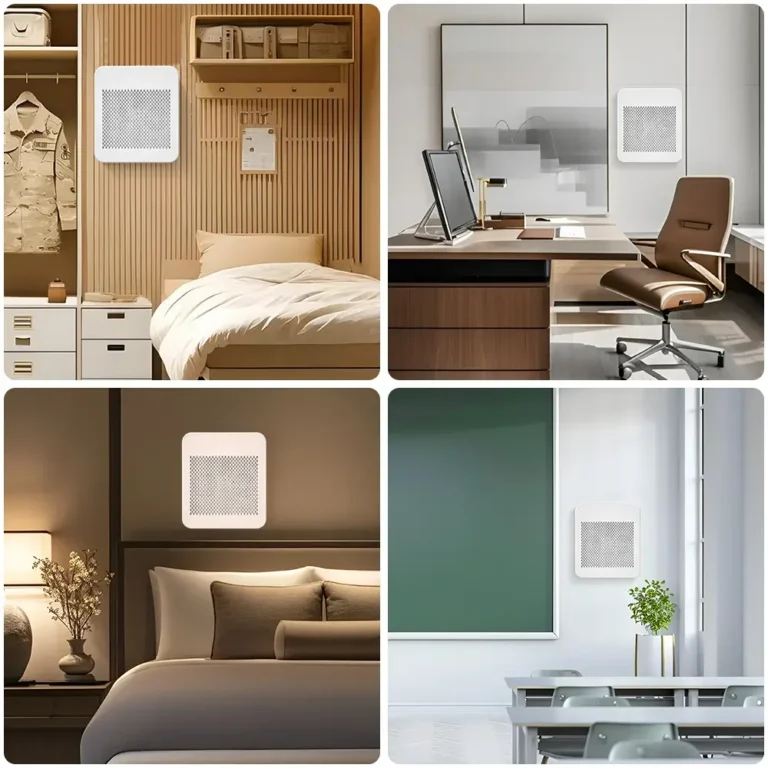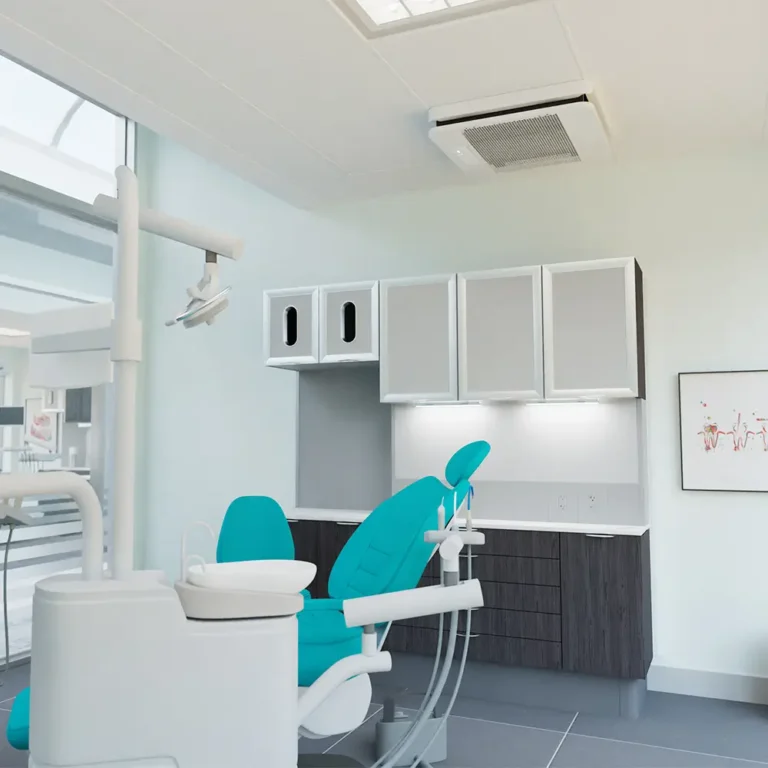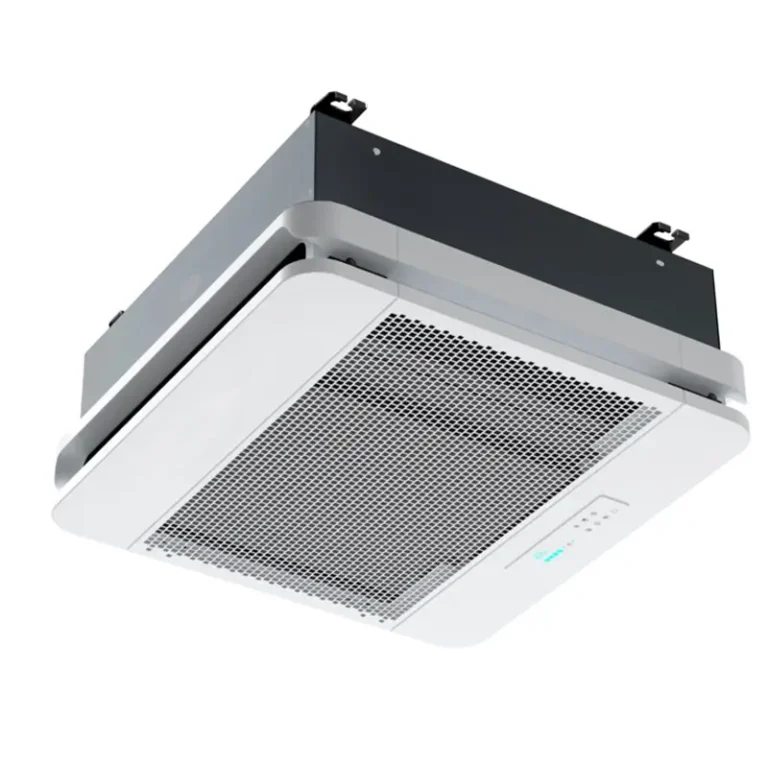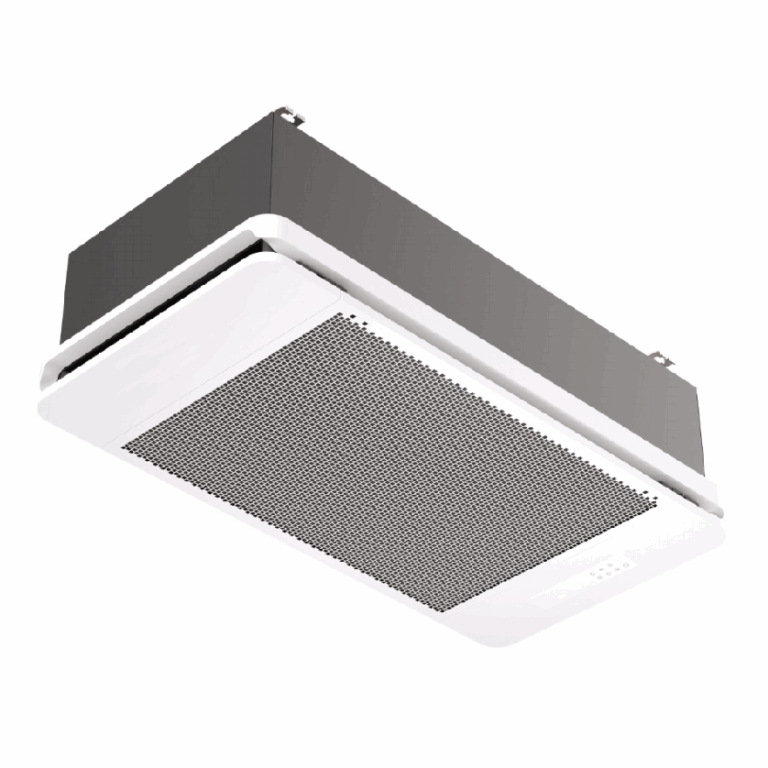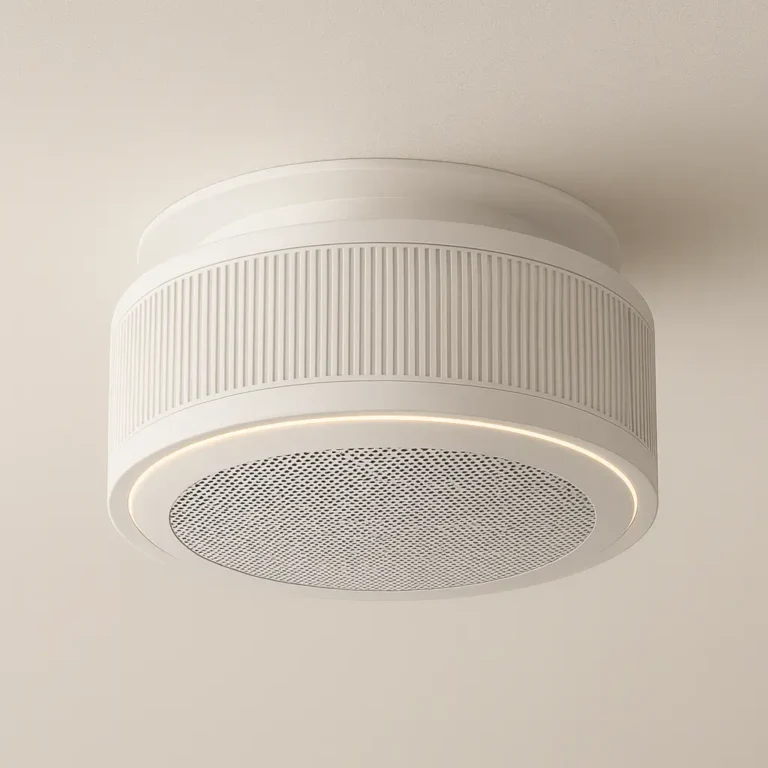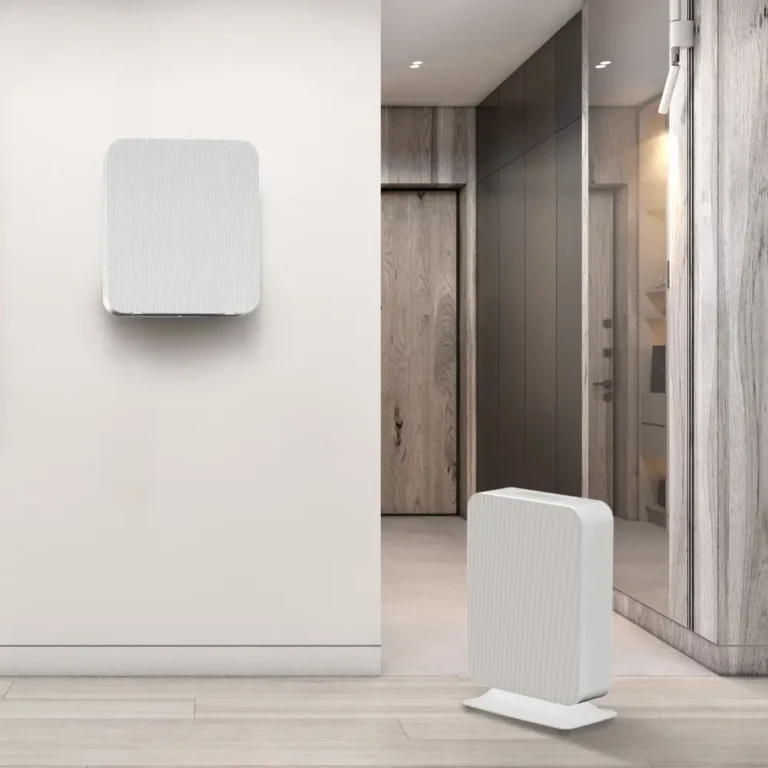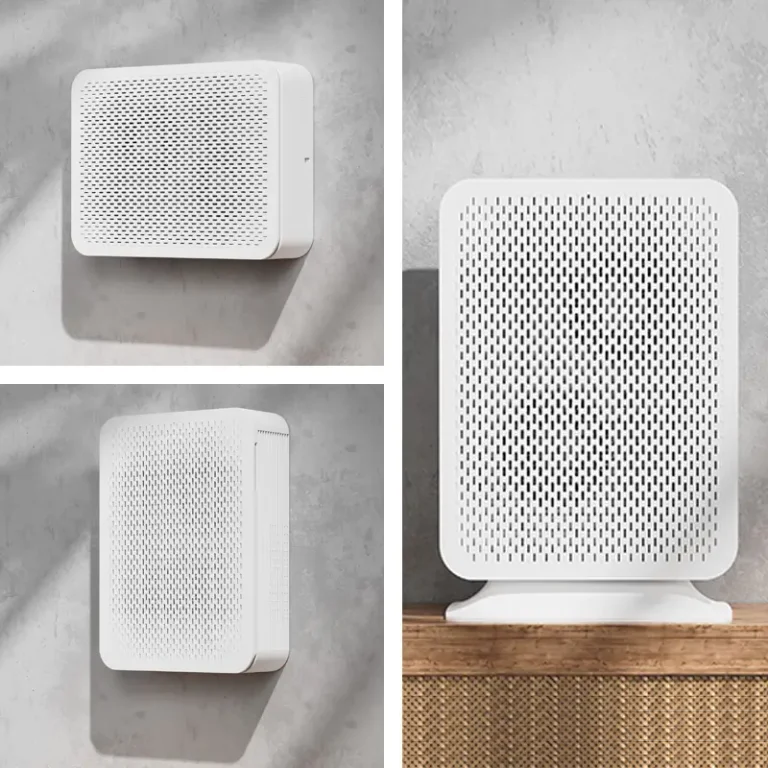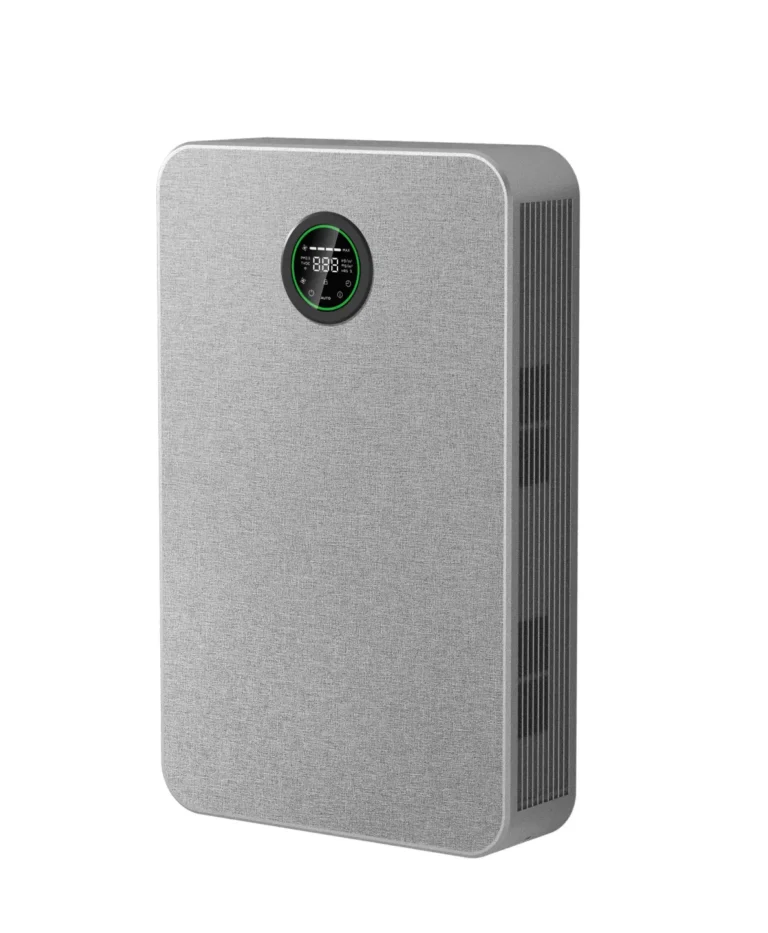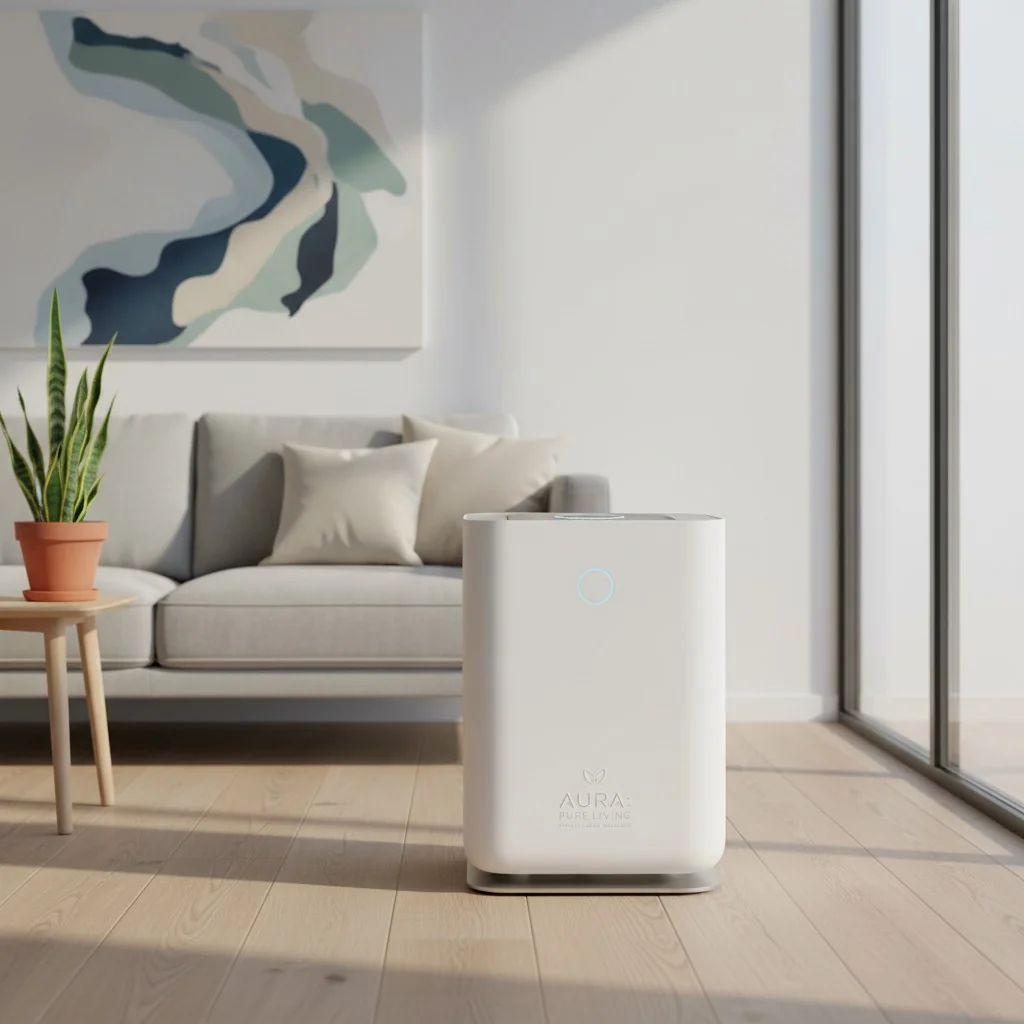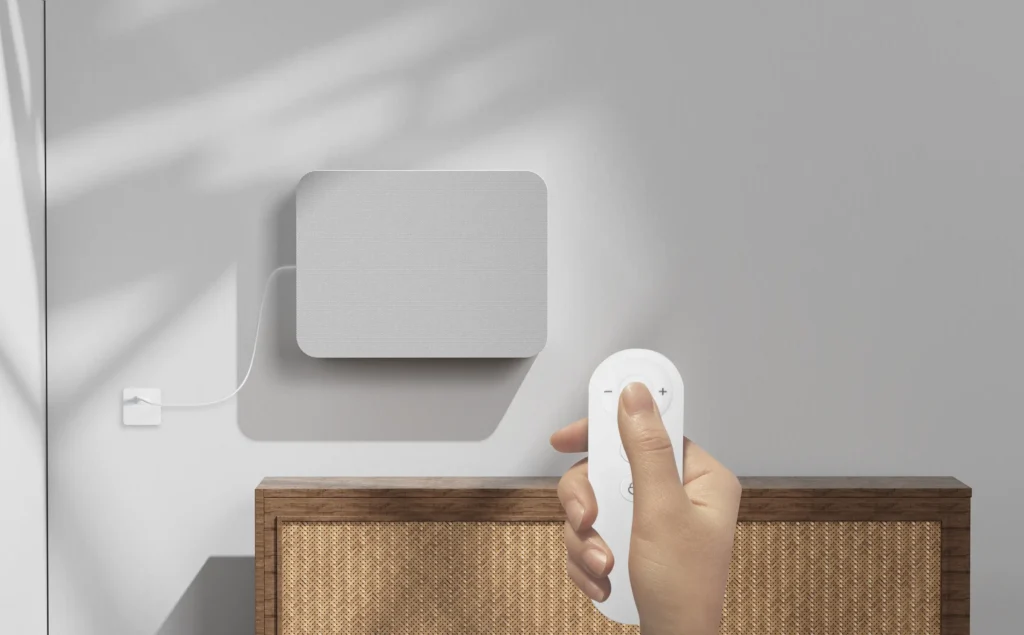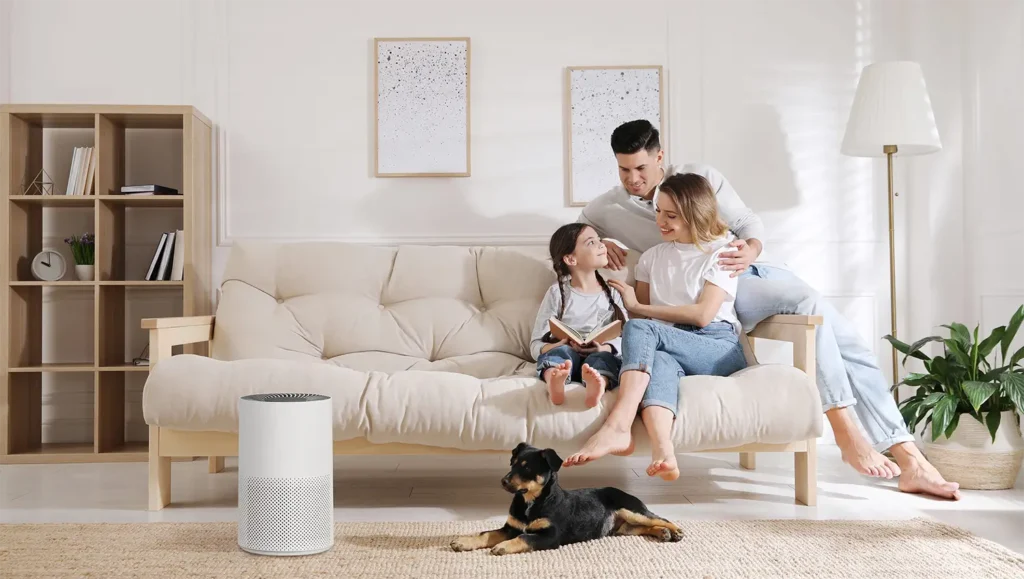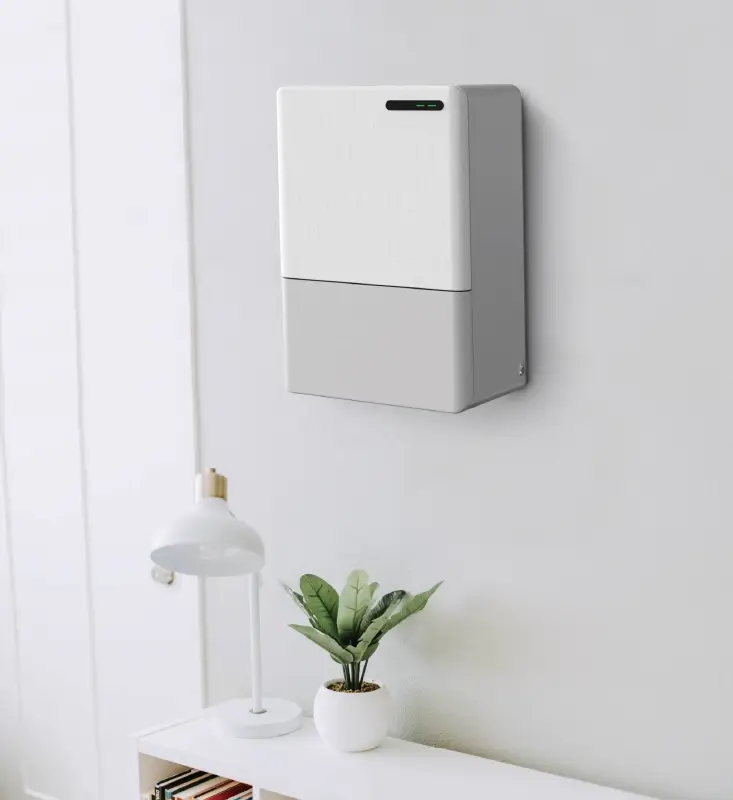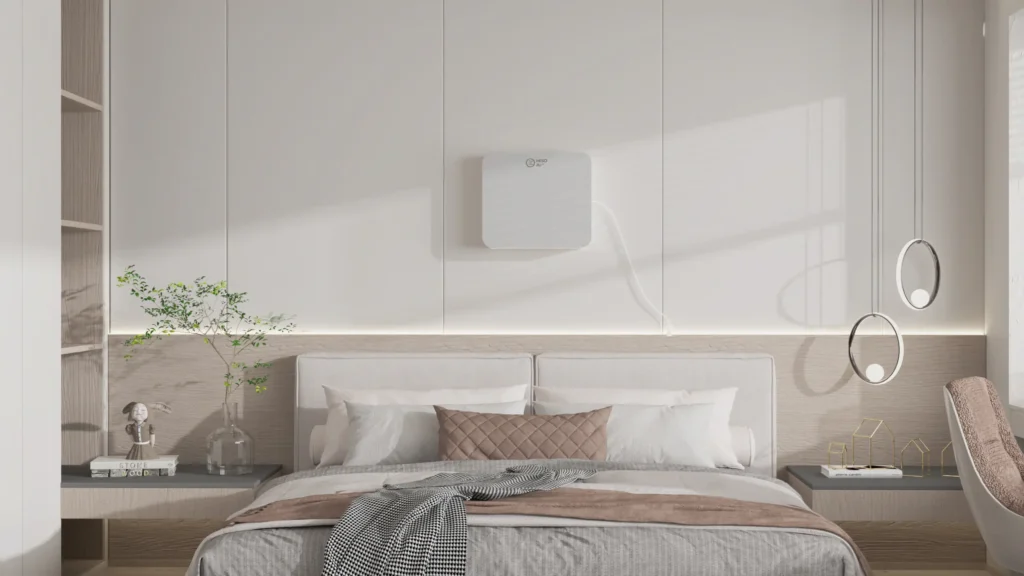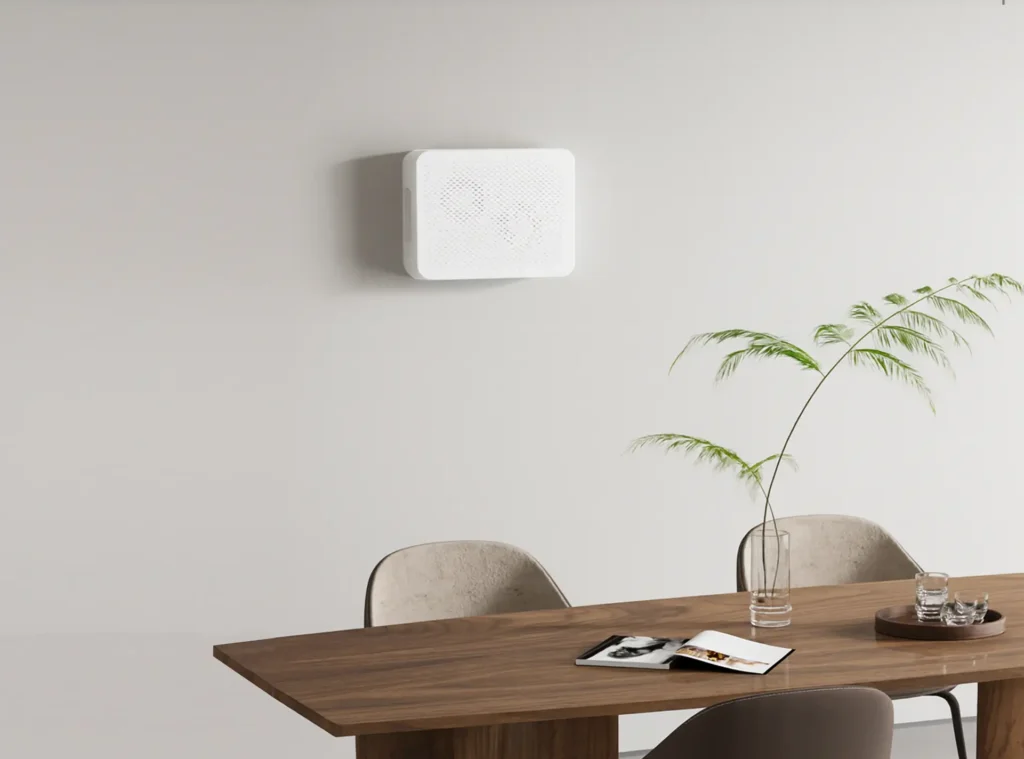In today’s post-pandemic workplace, indoor air quality (IAQ) is no longer optional it’s essential. As businesses prioritize employee health, productivity, and ESG goals, air purification has become a core component of modern office infrastructure. But when it comes to choosing the right solution for whole-office coverage, a key question arises: Should you invest in wall-mounted air purifiers or ceiling-mounted systems? This guide explores the pros, cons, and ideal applications of each, helping facility managers and decision-makers make a smart, future-proof choice.
The Imperative for Enhanced Indoor Air Quality (IAQ) in Corporate Spaces
The Evolving Workplace: Post-Pandemic Health Imperatives and Employee Expectations
Modern workplaces prioritize employee health. The pandemic made Indoor Air Quality (IAQ) a core corporate responsibility, increasing investment in advanced air purification. This shifts focus from compliance to proactive health, essential for contemporary offices.
Beyond Basic Ventilation: Identifying and Categorizing Airborne Office Contaminants
Effective office IAQ management requires understanding pollutants standard HVAC systems may miss. Office air contains a dynamic mix of internal and external contaminants:
- Particulate Matter (PM): Dust, pollen, pet dander, smoke (PM2.5 particularly concerning).
- Volatile Organic Compounds (VOCs): Gases from furniture, paints, cleaning agents, electronics, causing health effects.
- Bioaerosols: Airborne bacteria, viruses (including SARS-CoV-2), and mold spores.
- Gaseous Pollutants: Nicotine and chemical odors.
Effective air purification needs multi-stage filtration: pre-filter, HEPA filter, and activated carbon filter.
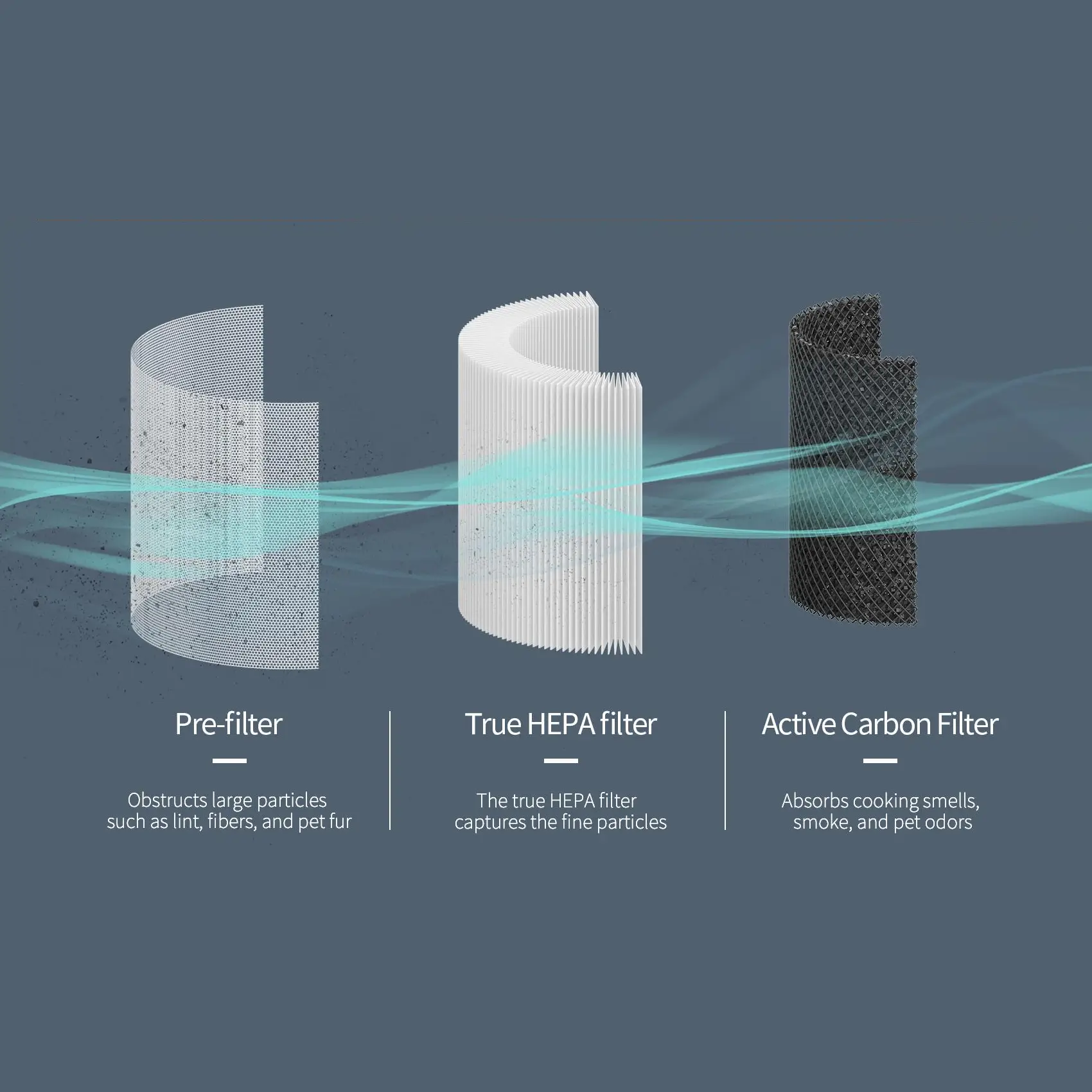
The Business Case for Clean Air: Linking IAQ to Productivity, Absenteeism, and Well-being
Investing in superior IAQ is strategic. Poor air quality correlates with adverse business outcomes: employee health issues, diminished productivity, and higher absenteeism. Elevated CO2 levels cause fatigue and cognitive decline.
Clean air offers a competitive advantage, attracting talent by prioritizing employee health. Proactive IAQ management can also reduce corporate insurance rates.
Perspectives from the Field: Key IAQ Concerns for Facility Managers
Flexible and hybrid work models complicate IAQ challenges for facility managers (FMs). Dynamic building occupancy links to pressing IAQ concerns. FMs address increased IAQ complaints in high-occupancy buildings while managing air quality efficiently in partially vacant spaces.
This demands scalable, responsive, data-driven solutions. Holistic IAQ management, understanding HVAC systems, pollutant pathways, and communication protocols are crucial. The focus is on verifiable, adaptable performance, driving adoption of purifiers with smart sensors and real-time data reporting for transparency and automatic adjustment.
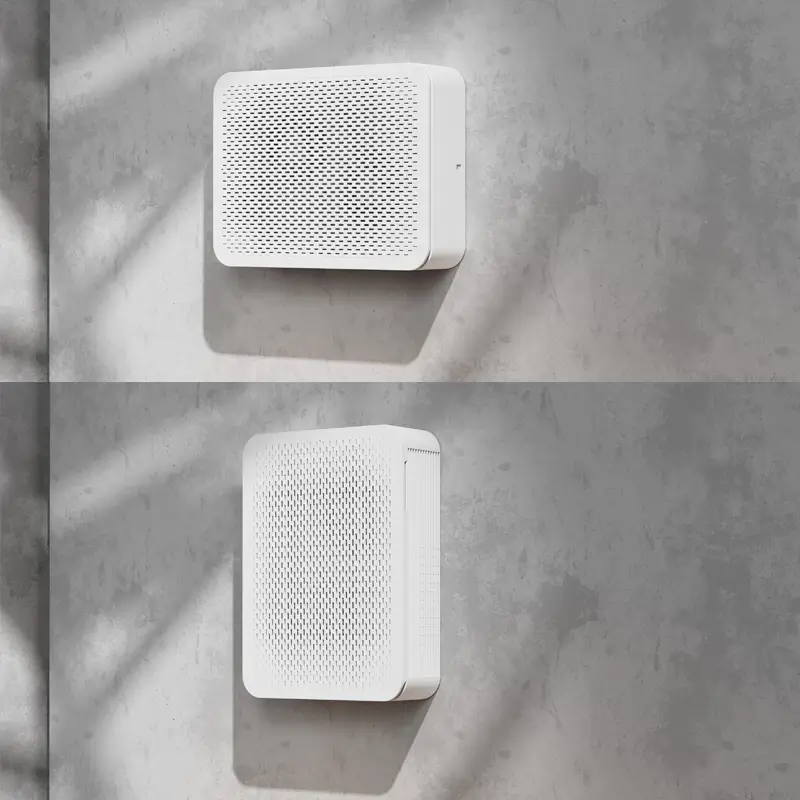
In-Depth Analysis of Wall-Mounted Air Purification Systems
Operating Principles and Airflow Dynamics
Wall-mounted air purifiers are self-contained, decentralized units that treat air within a specific zone. An internal fan draws ambient air through a multi-stage filtration system, expelling purified air back into the space. Intake vents are typically on the front or sides, with an outlet at the top or top-front to promote circulation.
Placement is critical. Manufacturers often suggest elevating purifiers up to 5 feet for floor-to-ceiling cleaning, rapidly capturing airborne particles. However, some argue heavier particles like dust are better captured closer to the floor, creating a paradox for offices with mixed contaminants. Regardless of height, unobstructed airflow is paramount. These units require several feet of clearance at the top, front, and sides; obstructions severely compromise effectiveness.
Performance, Efficacy, and Typical Specifications
Wall-mounted purifiers suit targeted purification in smaller, defined commercial spaces (private offices, small conference rooms, classrooms, salons). They are less optimal for comprehensive coverage in large, open-plan layouts. Some models, like HisoAir HA180/HA200/HA380/HA400, are rated for 20-50 m², requiring multiple units for larger areas.
Their performance relies on multi-stage filtration:
- Pre-Filter: Captures large particles.
- HEPA Filter: Primary filter for fine particulates (≥99.97% of 0.3-micron particles). Commercial models, like HisoAir's, use H13 or H14 filters (up to 99.99% efficiency).
- Activated Carbon Filter: Adsorbs gases, VOCs, and odors.
- Supplemental Technologies: Some include UV-C germicidal irradiation or bipolar ionization.
Key performance metrics:
- Clean Air Delivery Rate (CADR): HisoAir's wall-mounted purifiers (20-50 m² coverage) achieve 200-400m³/h at 55dB(A) with Decibel Cancellation™ Technology.
- Noise Level: HisoAir's units operate as low as 25 dB(A) and use Noise Sensor™ Technology for automatic quiet mode.
- Smart Features: HisoAir's wall-mounted units offer multiple integrated sensors (PM2.5, radar, temp/humidity, noise) for optimal purification and energy efficiency.
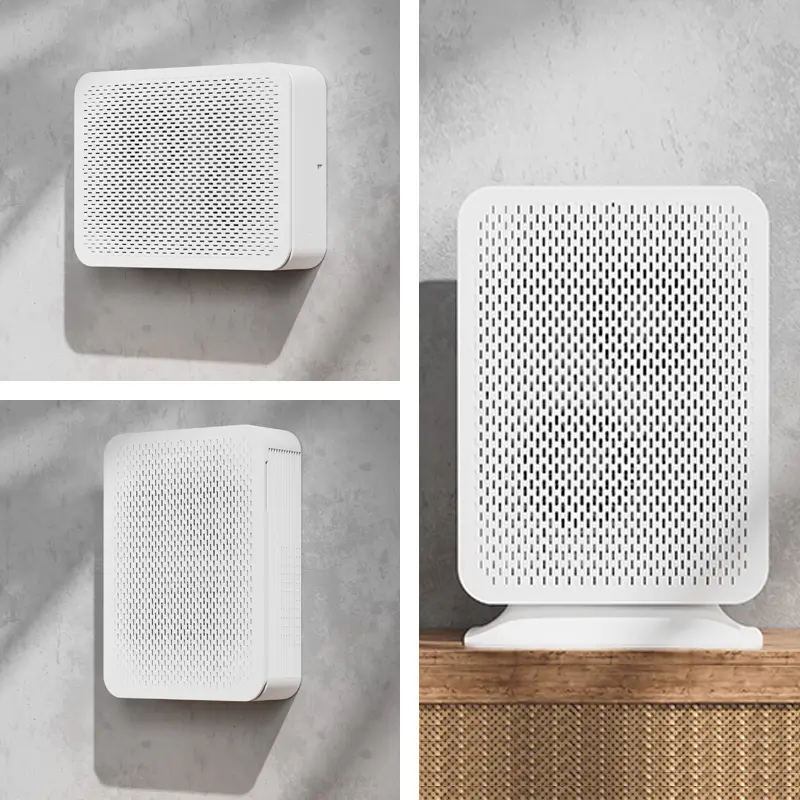
Installation, Aesthetics, and Space Optimization
The main advantage of wall-mounted purifiers is saving floor and desk space, crucial in commercial environments. They integrate unobtrusively, often resembling “hanging artwork that cleans the air.”
Installation is a fixed, one-time process, typically involving securing a mounting bracket. While less complex than HVAC modifications, it requires drilling and professional installation. Aesthetically, they are superior to bulky floor models, blending into modern office interiors with sleek, slim profiles. HisoAir’s units are ultra-slim (144mm) with customizable panels.
However, their space-saving benefit clashes with their need for unobstructed airflow (3-5 feet clearance). Finding such a location in a densely furnished office can be challenging, potentially negating the space-saving advantage. This suggests wall-mounted purifiers are not a universal “whole office” solution. Their ideal application is in smaller, enclosed zones—individual offices, small meeting rooms, or long corridors—where a single, strategically placed unit provides effective coverage without furniture obstruction or the need for a more powerful, expensive ceiling-based system.
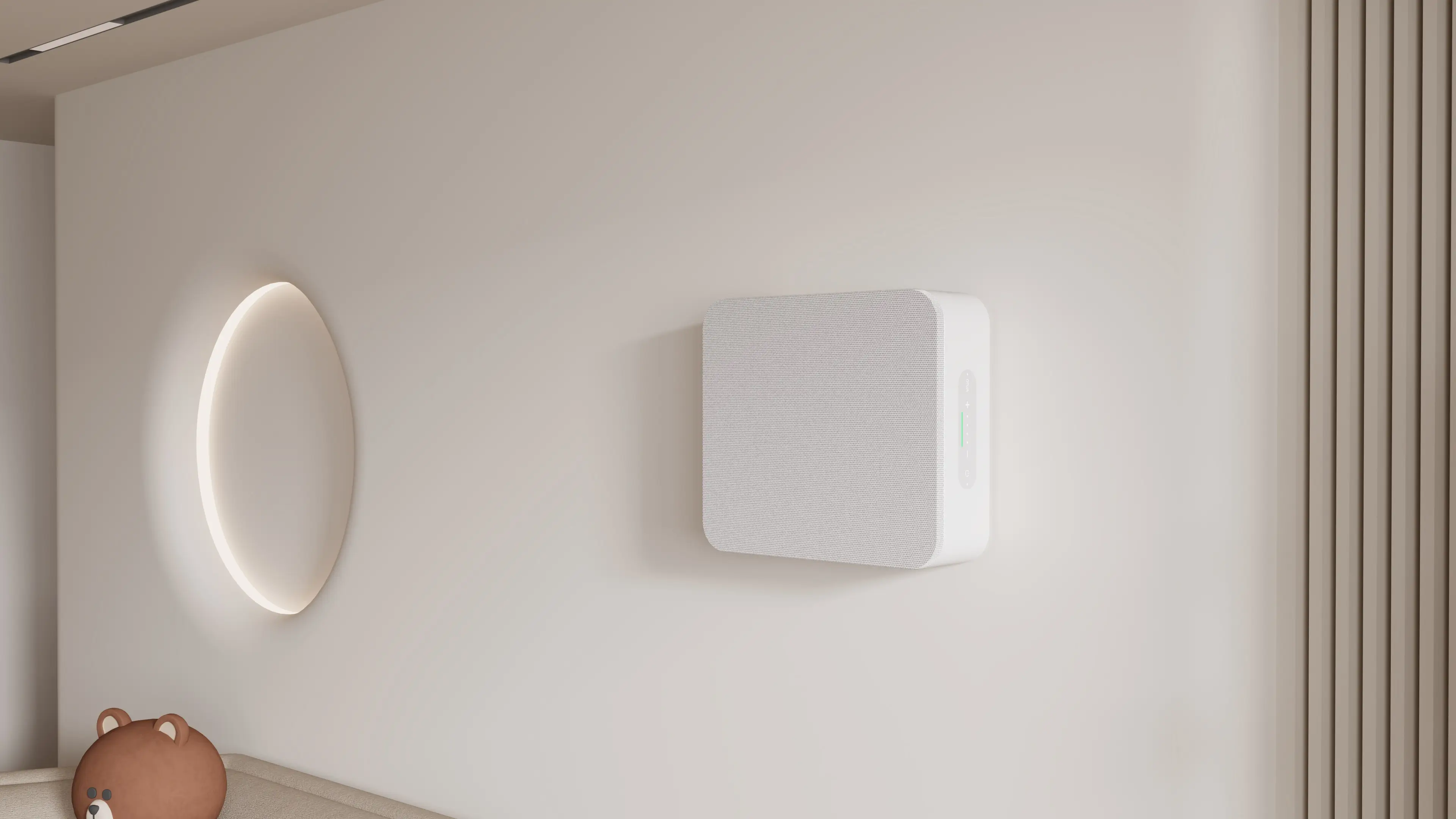
In-Depth Analysis of Ceiling-Mounted Air Purification Systems
Operating Principles and Airflow Dynamics: A Tale of Two Systems
Ceiling-mounted air purification involves two distinct system architectures:
-
Standalone / Recirculating Ceiling Units: These self-contained, high-capacity purifiers install directly into ceiling structures, often replacing a standard drop-ceiling tile. They draw contaminated air upwards, filter it, and redistribute purified air. Many use the Coanda effect, where purified air discharges horizontally along the ceiling, spreading widely before gently circulating downwards. This ensures broad, draft-free distribution.
-
HVAC-Integrated Ceiling Units: A more centralized approach, these units duct directly into the building’s main HVAC system. They act as a powerful, supplementary filtration stage, treating the entire air volume circulated by the HVAC fan. This upgrades the existing ventilation into a comprehensive, whole-office air purification system.
Performance, Efficacy, and Superior Coverage
Ceiling-mounted systems are engineered for large commercial spaces, offering superior performance:
- High-Capacity Performance: Defining feature is high airflow capacity (often exceeding 1000-2000 CFM), crucial for achieving stringent Air Changes per Hour (ACH) rates (e.g., 5-6 ACH). HisoAir’s HA800 offers up to 700m³/h (414 CFM) and covers 50-80m².
- Advanced Filtration: Utilize robust, commercial-grade media: thick, high-capacity HEPA filters (often medical-grade H13 or H14), substantial activated carbon beds, and often supplemental UV-C germicidal chambers. HisoAir’s HA800 uses Pre-filter + H13 HEPA, with optional UVC and activated carbon.
- Synergy with HVAC: HVAC-integrated units benefit from central system synergy, ensuring systematic, uniform distribution of purified air, eliminating coverage gaps. This can also improve energy efficiency.
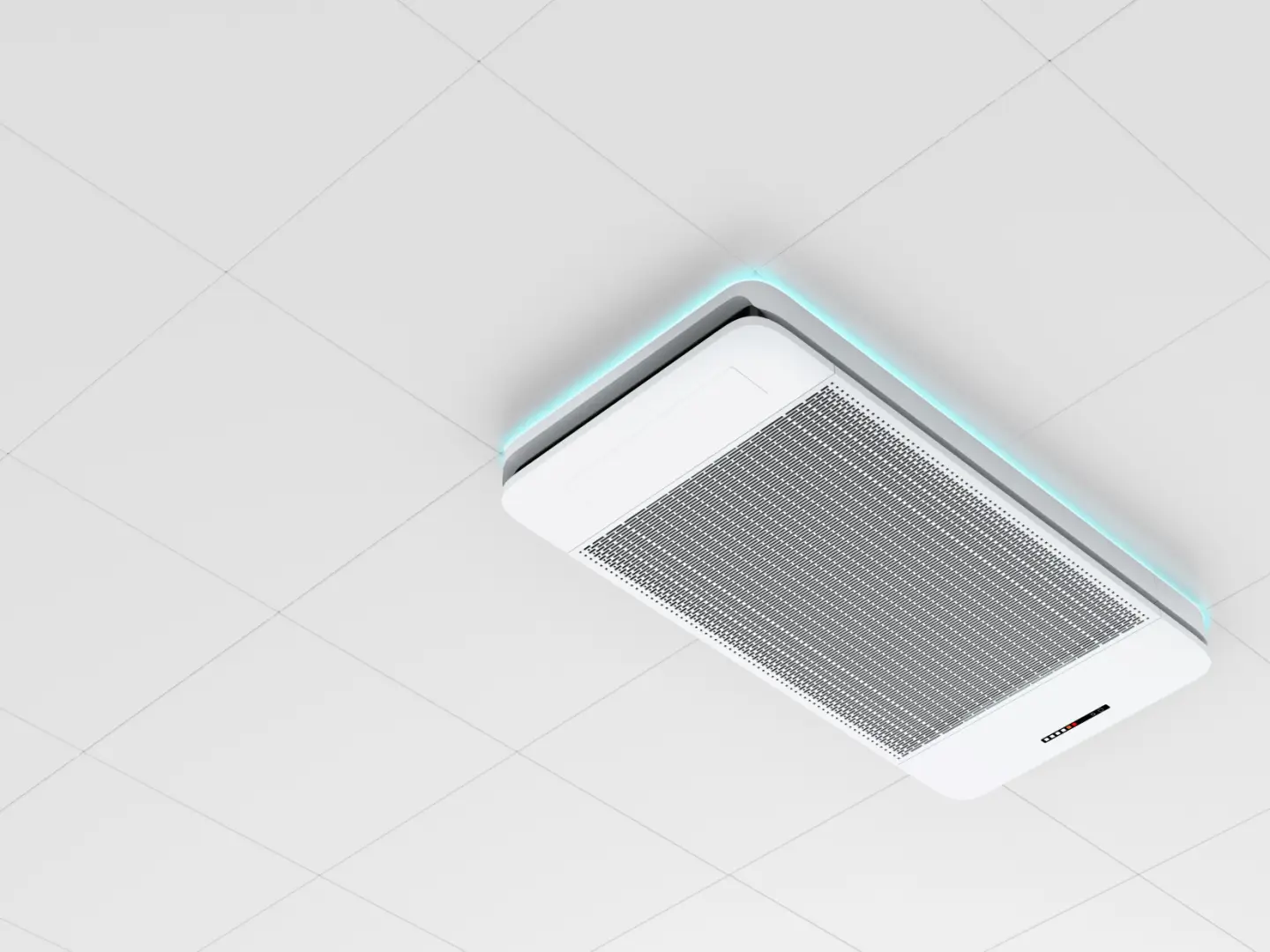
Installation, Aesthetics, and Operational Discretion
Superior performance comes with increased installation complexity and cost:
- Installation Complexity: Requires professional involvement. Standalone drop-ceiling units need secure anchoring and hard-wiring. HVAC-integrated systems are substantial capital projects, requiring HVAC contractors and potential building downtime.
- Aesthetic Integration: Undisputed champions of discretion. Installed flush with or suspended from the ceiling, they are completely out of sight, blending seamlessly into architectural environments. HisoAir’s HA800 is designed for seamless ceiling integration.
- Operational Discretion: Engineered for quiet operation, crucial for productive offices. Placement ensures routine maintenance occurs outside daily office traffic. HisoAir’s HA800 operates at 22-47 dB.
Choosing a ceiling-mounted system is a strategic decision between in-room recirculation and systemic ventilation enhancement. A facility manager needing targeted purification for a large area might choose a standalone drop-in unit. A corporate executive aiming for stringent corporate-wide health standards would evaluate an HVAC-integrated solution—a strategic capital investment for comprehensive, efficient whole-office coverage.
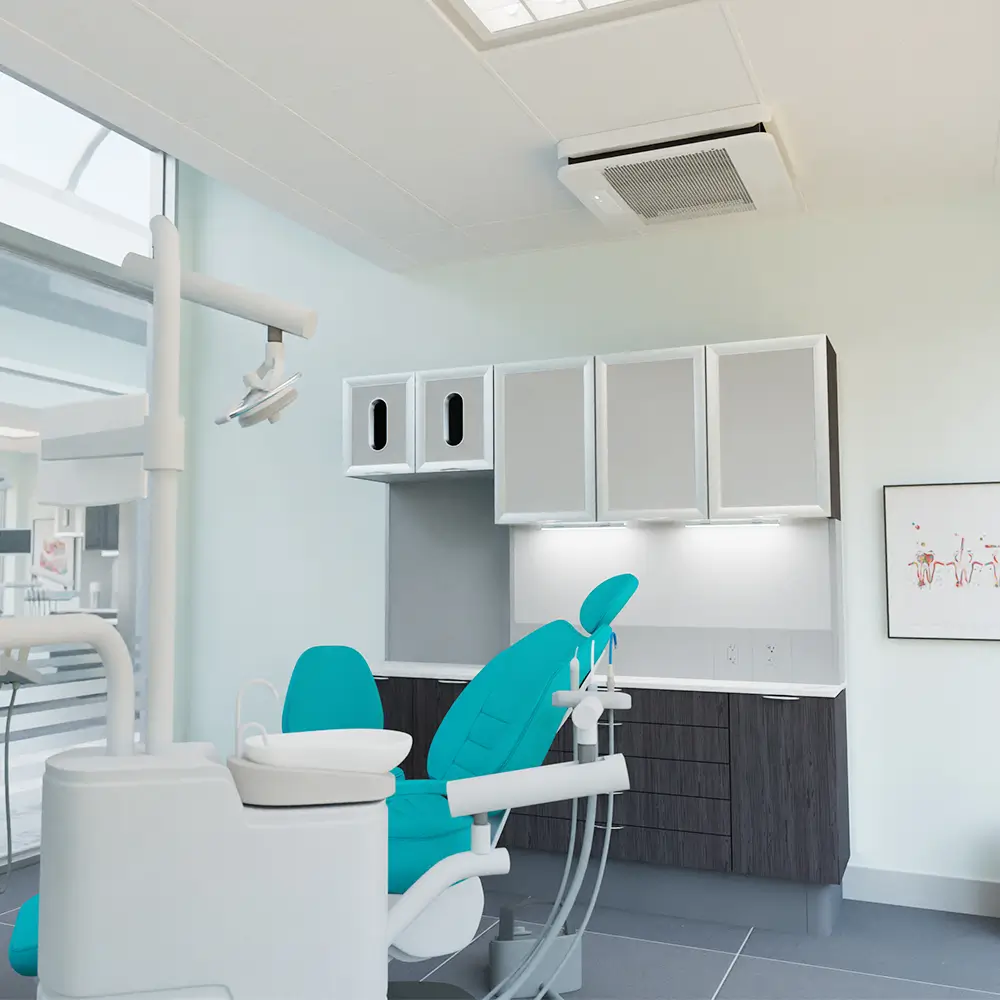
Comparative Analysis: Wall-Mounted vs. Ceiling-Mounted for Whole-Office Application
Optimal air purification for an entire office requires comparing wall-mounted and ceiling-mounted systems across key criteria, balancing performance, cost, logistics, and layout.
Efficacy and Coverage
- Wall-Mounted: Excel at zoned purification in smaller, enclosed spaces (<50 m²). In large, open-plan layouts, they suffer significant coverage gaps and are sensitive to airflow obstructions. Comprehensive coverage would require many units, creating logistical challenges and inconsistent air quality.
- Ceiling-Mounted: Unequivocally superior for whole-office coverage, especially open-plan designs. Standalone units use the Coanda effect for broad, even air recirculation. HVAC-integrated models provide the most complete, uniform coverage by treating and distributing air through the entire ductwork system.
Verdict: For large, open-plan modern offices, ceiling-mounted systems offer fundamentally better efficacy and coverage.
Performance Metrics (CADR, ACH, Filtration)
- Wall-Mounted: Generally lower performance. HisoAir’s wall-mounted purifiers offer up to 380m³/h (approx. 223 CFM). Achieving high ACH in large spaces is impractical due to the number of units required.
- Ceiling-Mounted: Designed for high-performance commercial applications. HisoAir’s HA800 offers up to 700m³/h (414 CFM) for 50-80m² spaces. This power makes achieving recommended 5-6+ ACH in large commercial spaces efficient and possible.
Verdict: Ceiling-mounted systems deliver superior raw performance metrics for large-scale commercial air purification.
Installation and Disruption
- Wall-Mounted: Lower initial disruption. Decentralized, per-unit installation, relatively quick. Requires wall drilling. Allows phased rollout without significant operational downtime.
- Ceiling-Mounted: More involved and disruptive. Standalone drop-in units require ceiling grid work and hard-wiring. HVAC-integrated systems are significant capital projects, requiring HVAC contractors and potential building downtime.
Verdict: Wall-mounted units win for ease of installation and minimal initial disruption.
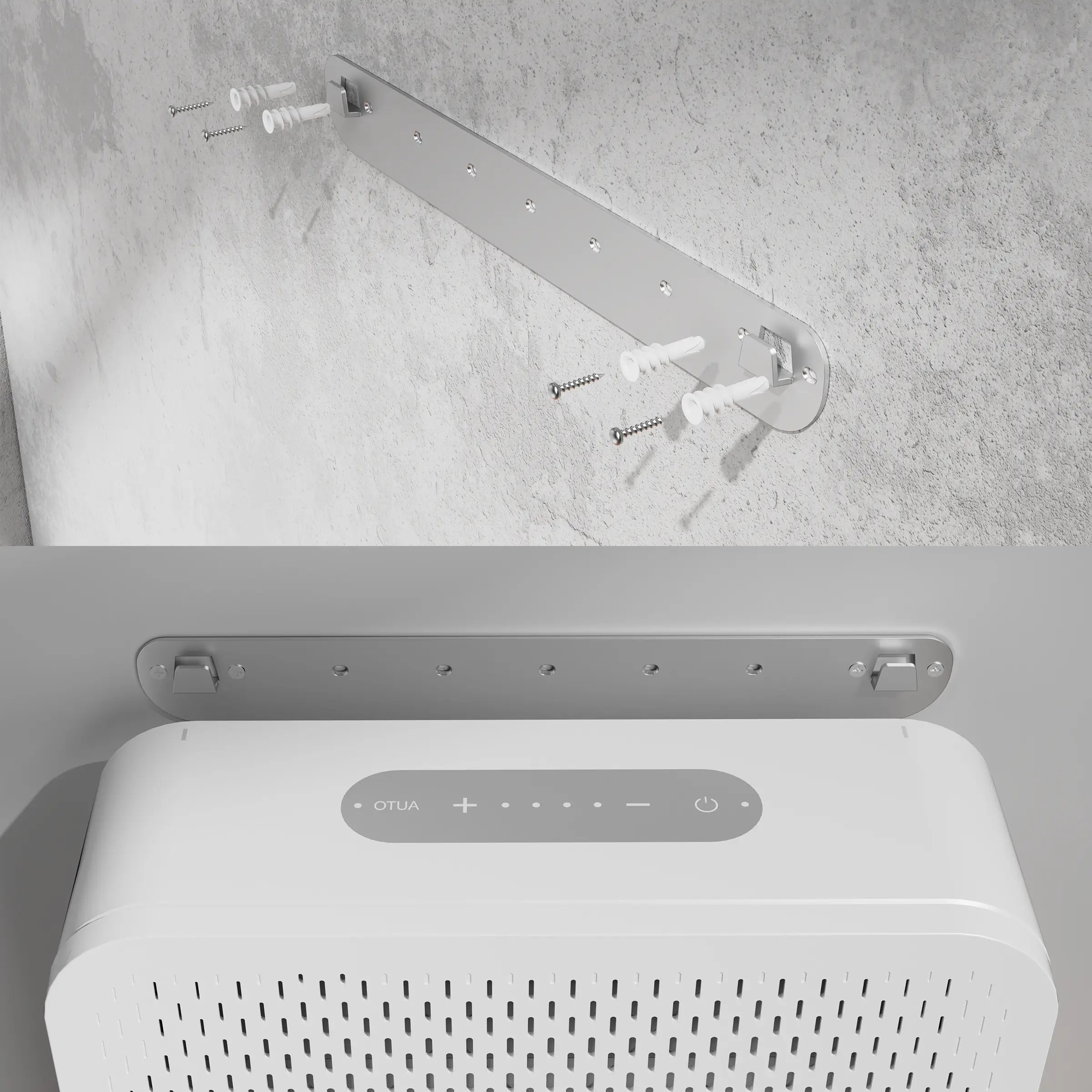
HisoAir's wall-mounted air purifier is easy to install
Operational Management and Maintenance
- Wall-Mounted: Decentralized, high-frequency maintenance. Each unit needs filter changes (HEPA: 6-12 months, carbon: more often) and cleaning. For large offices, this is a significant, recurring logistical burden. Physical access is straightforward.
- Ceiling-Mounted: Centralized maintenance, but physically more demanding. Key advantage is longer component lifespan (e.g., ISO-Aire: 5-6 years), drastically reducing maintenance frequency, saving long-term labor and material costs.
Verdict: Despite more effort per service, ceiling-mounted systems offer lower overall maintenance burden and superior operational efficiency long-term due to extended filter life.
Acoustic and Aesthetic Impact
- Wall-Mounted: Noise varies. HisoAir’s wall-mounted units operate as low as 25 dB(A). More visible than ceiling units, but sleeker than floor models. HisoAir’s units are ultra-slim with customizable panels.
- Ceiling-Mounted: Engineered for quiet operation even at high CFM. Aesthetically superior: integrated into the ceiling, virtually invisible. HisoAir’s HA800 operates at 22-47 dB and integrates seamlessly.
Verdict: Ceiling-mounted systems are superior in providing both acoustic and aesthetic discretion.
Total Cost of Ownership (TCO)
- Wall-Mounted: Lower initial acquisition cost. Whole-office TCO can be high due to many units, higher cumulative energy, and frequent filter replacements/labor.
- Ceiling-Mounted: Higher upfront capital expenditure. However, over 5-10 years, TCO is often lower for large deployments due to fewer units, greater energy efficiency, and dramatically longer filter replacement intervals.
Verdict: While wall-mounted purifiers have a lower barrier to entry, ceiling-mounted systems likely offer better long-term TCO and ROI for large-scale, whole-office applications. This requires detailed financial analysis.

Strategic Implementation and Decision-Making Framework
Developing a Zoned Hybrid Purification Strategy
The most sophisticated and cost-effective approach to purifying an entire office is rarely a binary choice between wall-mounted and ceiling-mounted systems. Instead, the optimal solution is a zoned, hybrid strategy that leverages the strengths of each technology where they are most appropriate.
- Large, Open-Plan Areas: For the expansive open-plan sections, lobbies, and large common areas that characterize modern offices, ceiling-mounted systems are the backbone of the strategy. These spaces demand high ACH rates and uniform air distribution to be effective. The superior CFM, optimized airflow patterns (like the Coanda effect), and centralized nature of ceiling units make them the unequivocally superior choice for these applications. They provide the powerful, wide-ranging coverage necessary to treat the bulk of the office’s air volume.
- Enclosed and Specialized Spaces: For smaller, enclosed rooms such as private offices, small-to-medium conference rooms, and huddle spaces, wall-mounted units are the ideal complementary tool. A single wall-mounted unit can efficiently and effectively purify the air in these smaller volumes, avoiding the unnecessary cost and power of specifying a large ceiling unit for a confined space. Furthermore, for zones with specific, localized pollutant sources, such as kitchenettes (odors, cooking fumes) or copy rooms (VOCs, ozone), a dedicated wall-mounted unit with enhanced activated carbon filtration can provide targeted and highly effective remediation.
This hybrid approach allows facility managers to engineer a solution that is both highly effective and financially efficient, matching the purification technology to the specific requirements of each zone within the office.
Calculating Required Capacity: A Guide for Facility Managers
To properly size the air purification system for any given zone, facility managers should follow a systematic calculation process:
- Calculate Room Volume: Determine the total volume of the space in cubic feet:
Room Volume (ft³) = Length (ft) × Width (ft) × Ceiling Height (ft). Volume is more accurate than square footage, especially with varied ceiling heights. - Determine Target ACH: Define the desired Air Changes per Hour (ACH). General offices: 3-5 ACH. High-density areas (conference rooms, cafeterias) or health-critical environments: 5-6+ ACH.
- Calculate Required CFM:
Required CFM = (Room Volume × Target ACH) / 60. - Select and Combine Purifiers: Choose ceiling and/or wall-mounted purifiers whose total CADR or CFM meets/slightly exceeds the calculated requirement. Rule of thumb: purifier’s CADR should be at least two-thirds of the room’s square footage.
Vendor and Product Selection Criteria
Choosing the right equipment goes beyond comparing basic specifications. For a long-term commercial investment, several factors must be scrutinized:
- Manufacturer Reputation: Prioritize vendors with a proven track record in manufacturing commercial-grade air purification systems. Companies like HisoAir, Fellowes, ISO-Aire, Daikin, LakeAir, and Air Quality Engineering have established product lines specifically for commercial and industrial applications.
- Verified Performance Data:
- Certified CADR: Ensure independent testing/certification (e.g., AHAM).
- Filtration Grade: Insist on True HEPA (99.97% at 0.3 microns) or higher (H13/H14). Avoid ambiguous terms.
- Noise Levels at Max Speed: Most relevant acoustic metric is dBA at highest fan speed.
- Long-Term Cost Factors:
- Filter Lifespan and Cost: Primary TCO driver. Compare replacement frequency/cost for all filter components.
- Advanced Features and Integration:
- Smart Systems: Evaluate sensor sophistication, auto-operation, Wi-Fi remote management.
- BMS Integration: Critical for strategic, future-proofed systems, allowing centralized control, data logging, and automation with overall building strategy.
Long-Term Management and Verification
Successful IAQ strategy extends beyond installation:
- Proactive Maintenance: Rigorous schedule essential: filter replacement, regular cleaning of exteriors/vents for optimal airflow.
- Continuous IAQ Monitoring: Deploy independent, third-party IAQ monitors (PM2.5, CO2, TVOCs) to validate system effectiveness, build occupant trust, provide transparency, and fine-tune environment.
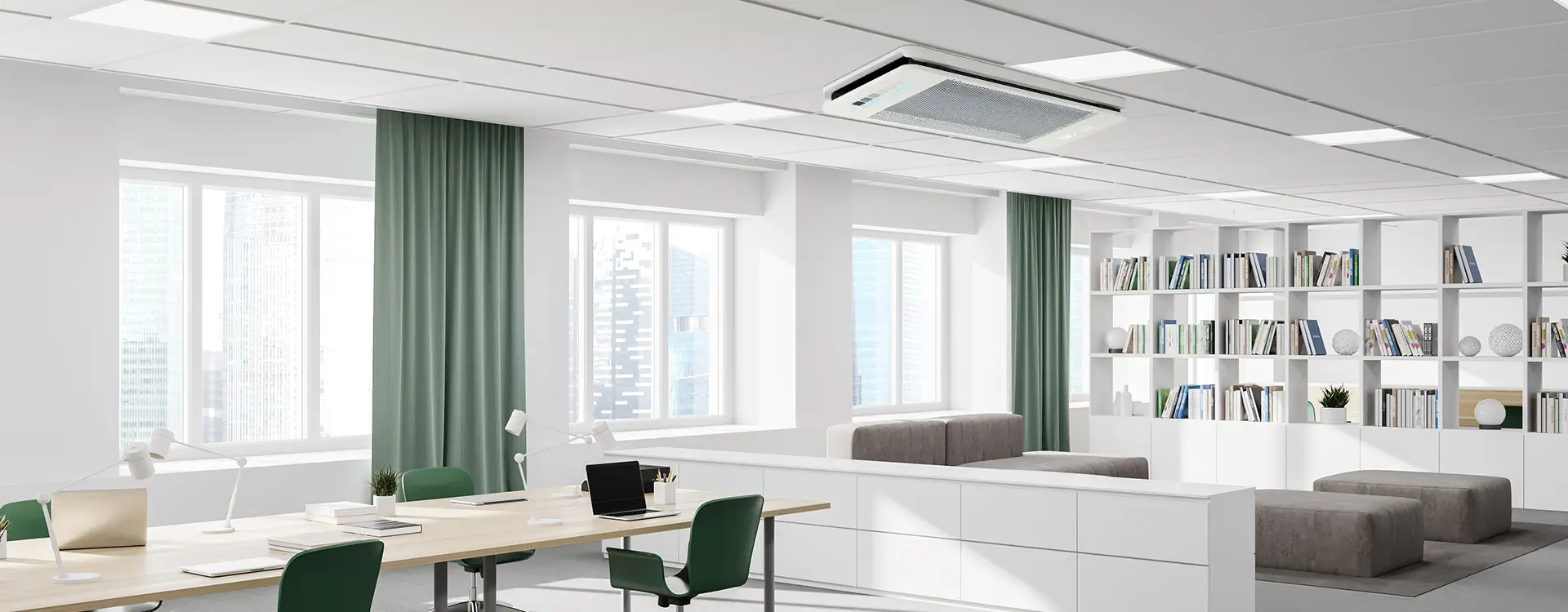
HisoAir's HA2000 offers higher performance. If you'd like to learn more, please お問い合わせ directly.
Final Recommendations and Strategic Outlook
The Verdict for Whole Offices: Embrace the Hybrid Strategy
For a “whole office” solution, neither wall-mounted nor ceiling-mounted purifiers alone are optimal. The most effective, efficient, and strategically sound approach is a zoned, hybrid model combining both technologies.
Ceiling-mounted systems form the backbone. Purpose-built for large, open-plan commercial spaces, their high-CFM performance, superior air distribution, operational discretion, and favorable long-term TCO make them the best investment for treating most office square footage. They provide powerful, foundational purification for common areas, lobbies, and open work zones.
壁掛けユニット serve as essential complementary tools. Deploy them surgically for targeted, cost-effective purification in smaller, enclosed spaces (private offices, conference rooms) where large ceiling units would be overkill. They are also ideal for addressing specific, localized pollutant sources (kitchens, copy rooms).
This hybrid strategy allows for a right-sized, cost-optimized solution delivering high-performance IAQ across the entire corporate footprint without over-engineering or under-performing.
Future-Proofing Your IAQ Investment: Data, Integration, and Sustainability
Future office air purification will be defined by:
- Data & Integration: The future of IAQ lies in smart, connected systems. Integration with Building Management Systems (BMS) enables real-time monitoring, automation, and data-driven adjustments based on occupancy and air quality. Transparency in IAQ metrics is becoming essential for building trust and demonstrating health commitment.
- Sustainability & Lifecycle Cost: As ESG goals and energy costs rise, efficiency and durability are key. Metrics like CADR-to-Watt ratio, use of recyclable materials (e.g., steel, aluminum), and long filter lifespans will define sustainable, cost-effective air purification solutions.
- Holistic Indoor Environment: Air purification is just one part of a broader strategy that includes ventilation, humidity, acoustics, and lighting. Choosing a purifier today is not just about air—it’s an investment in overall occupant health and long-term building performance.

